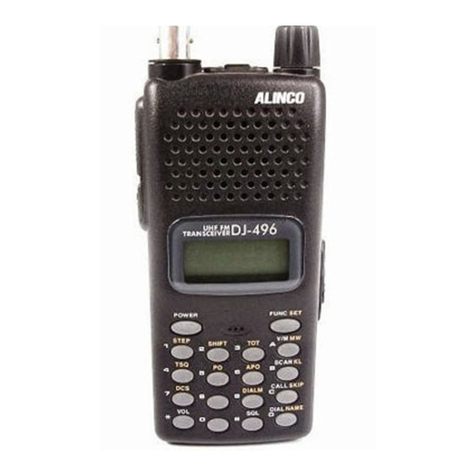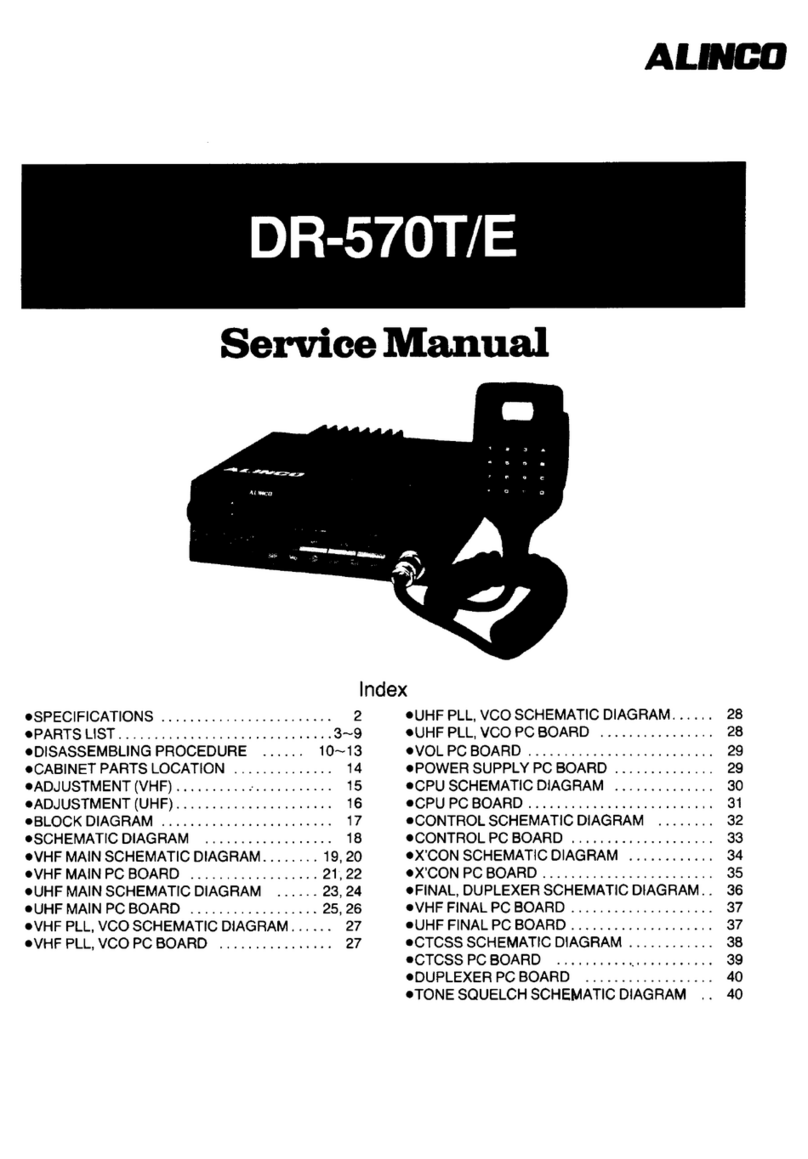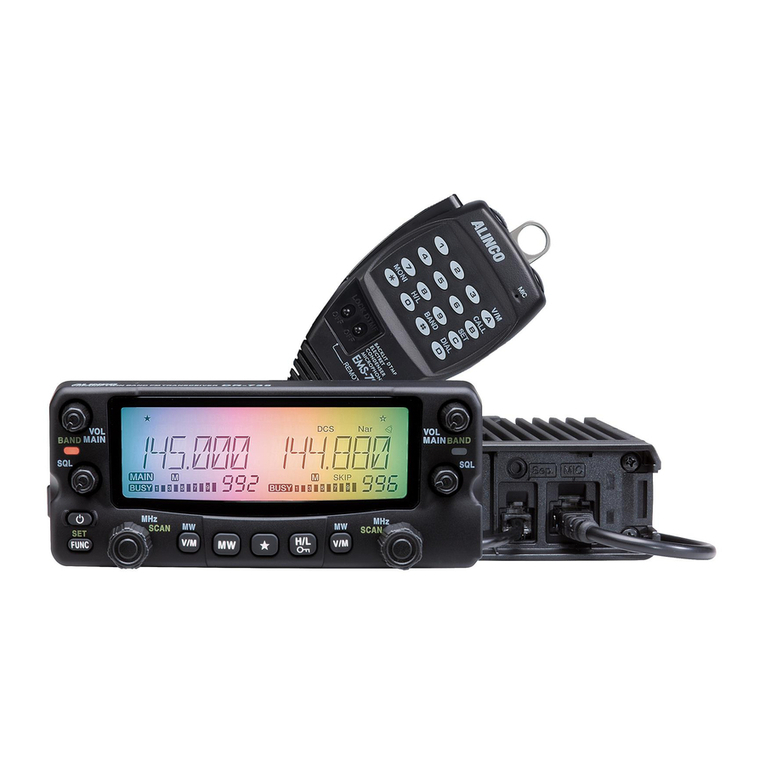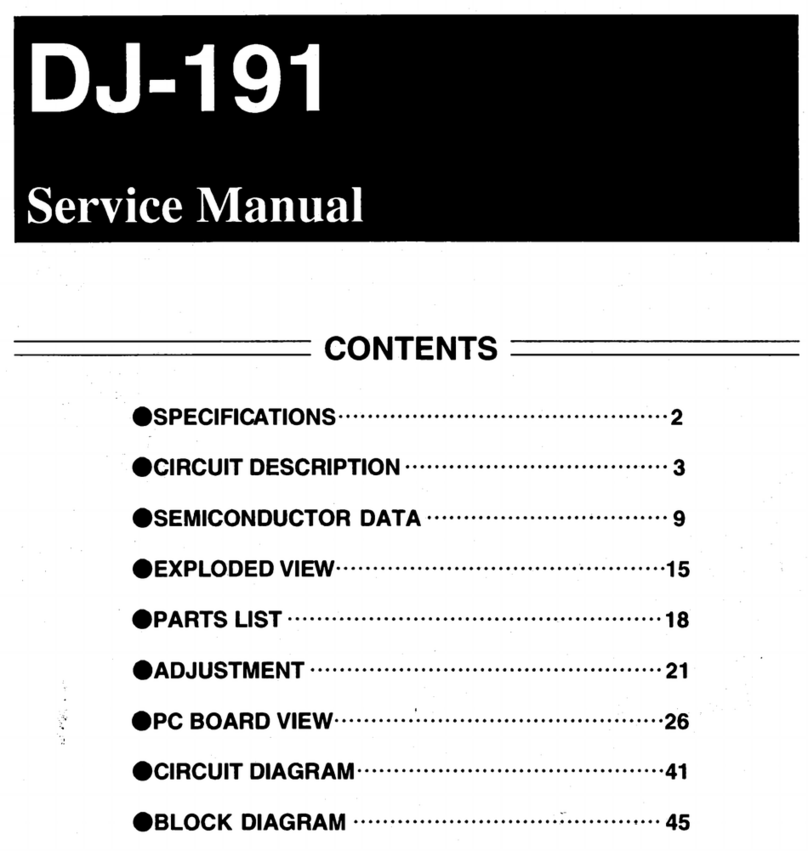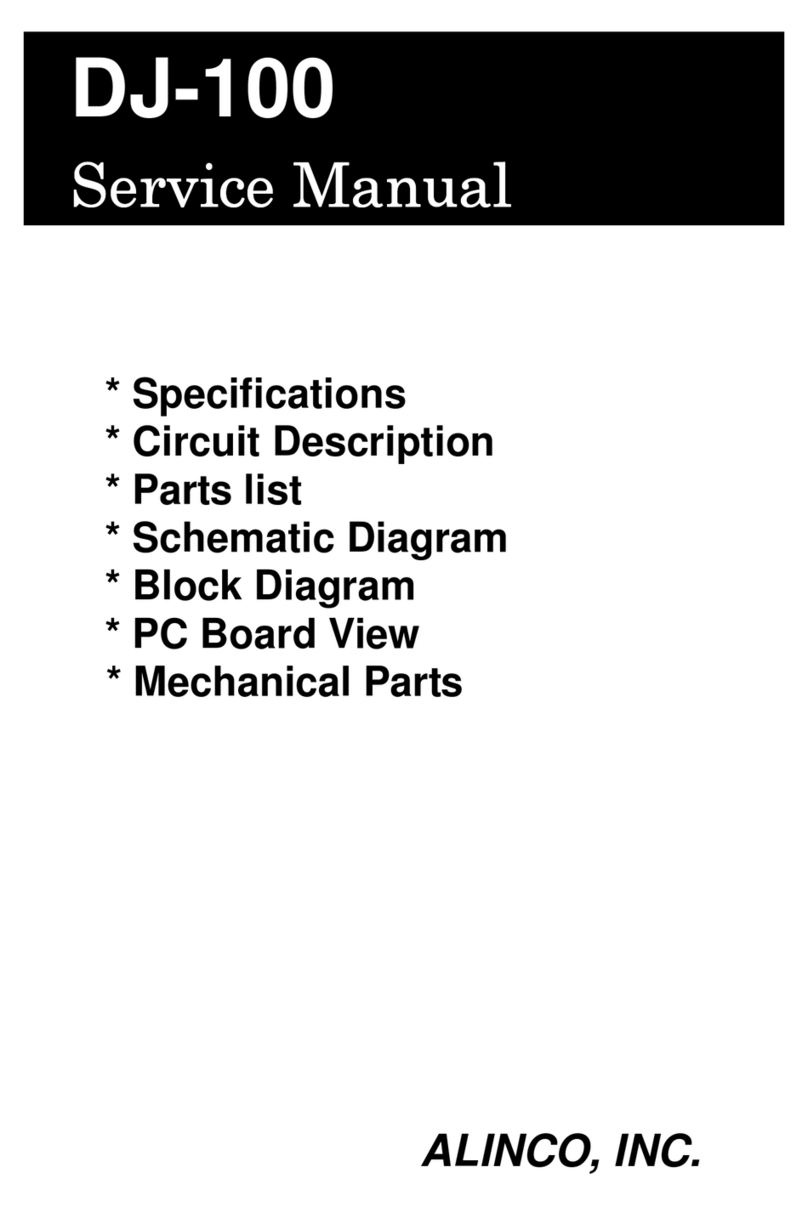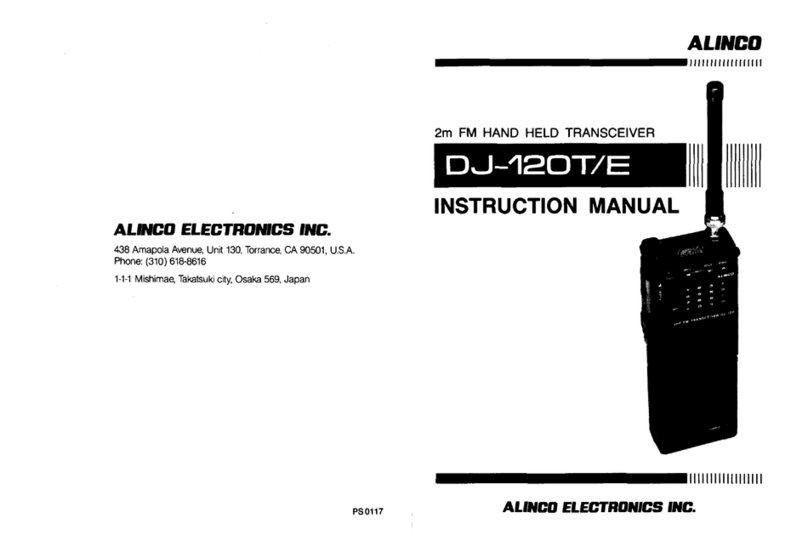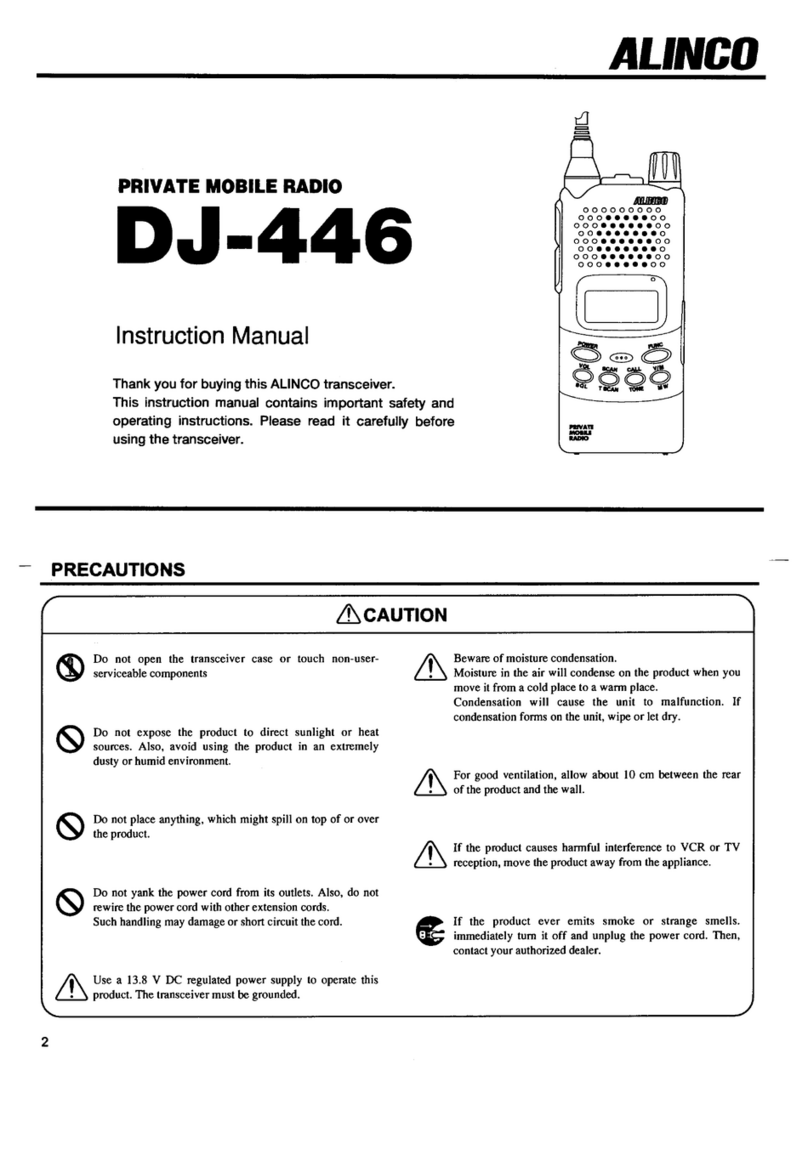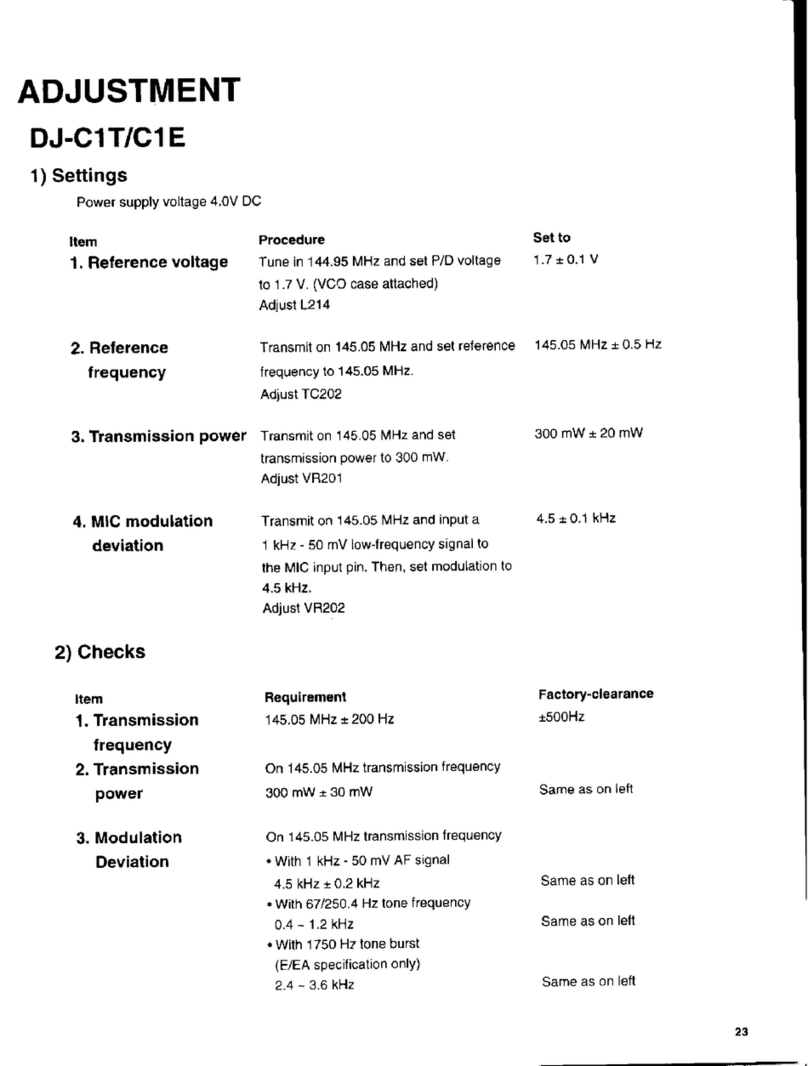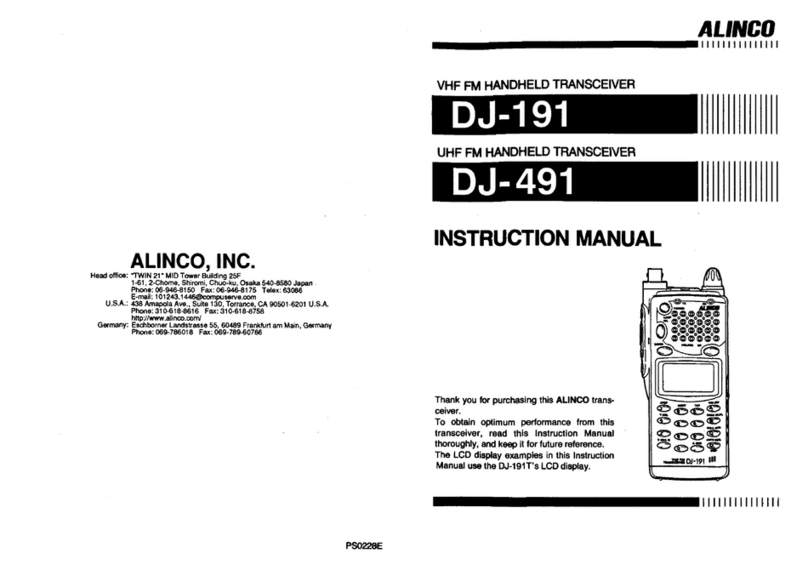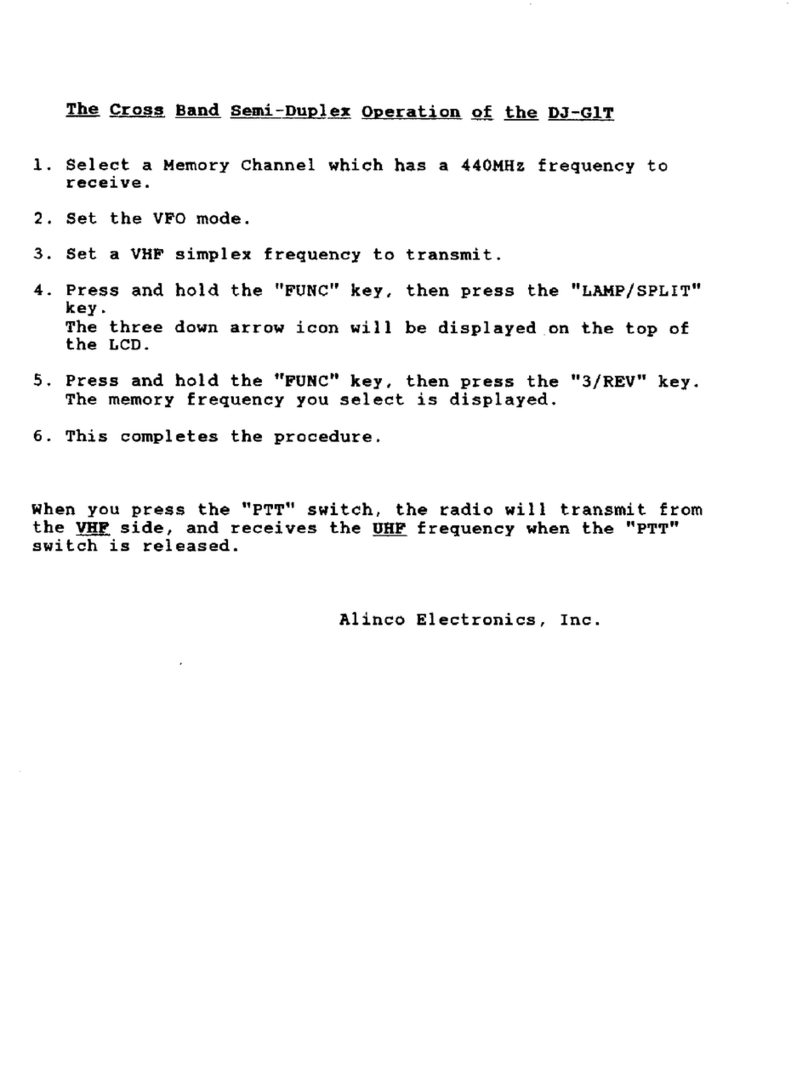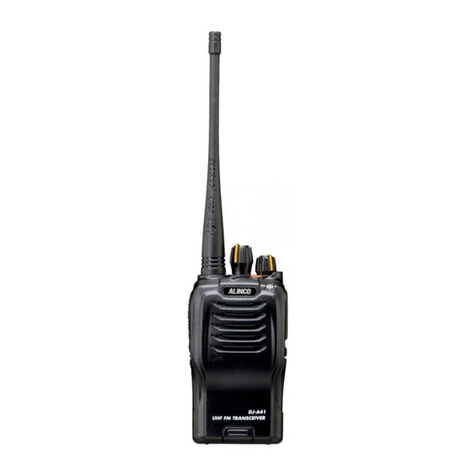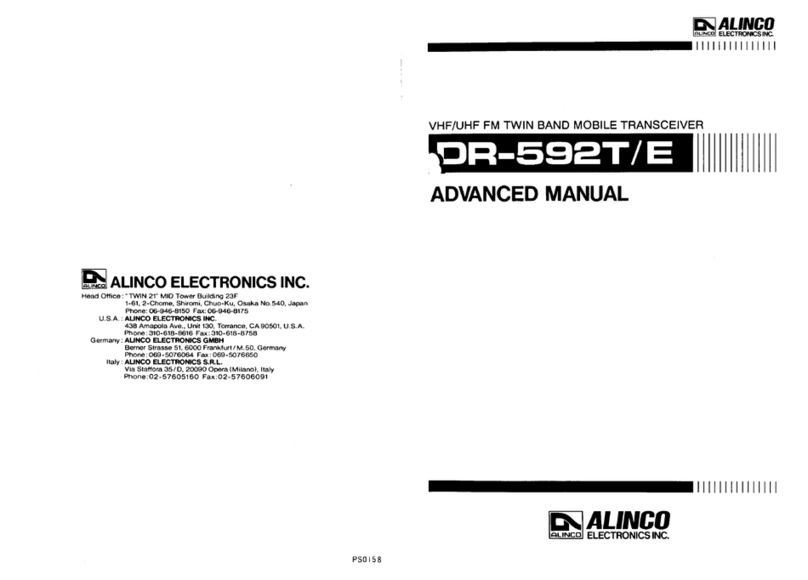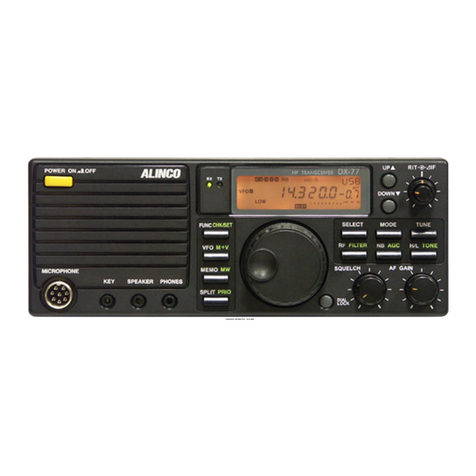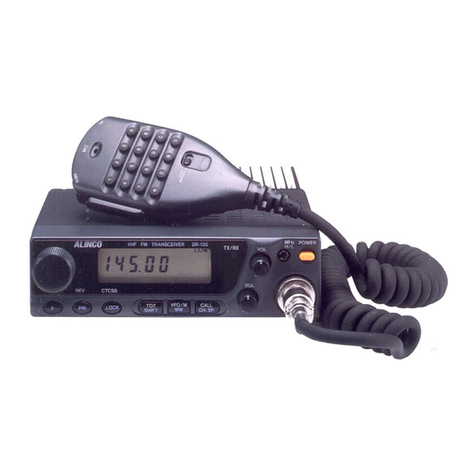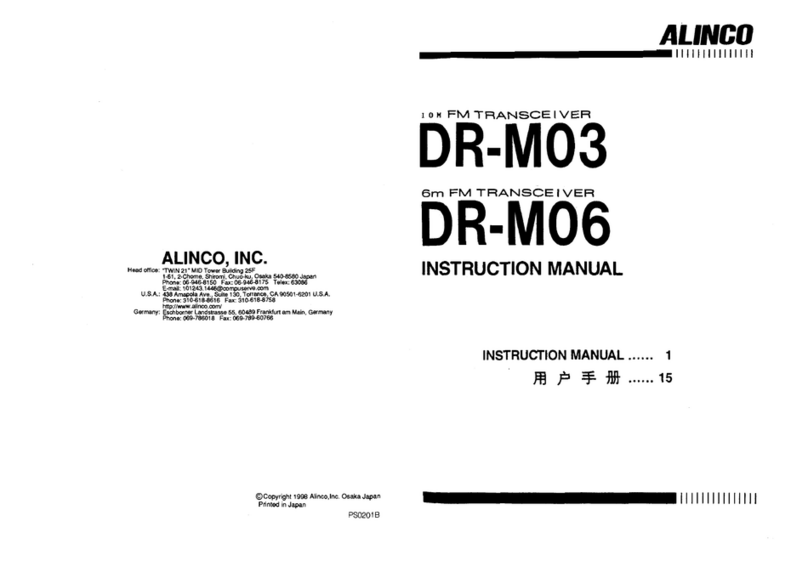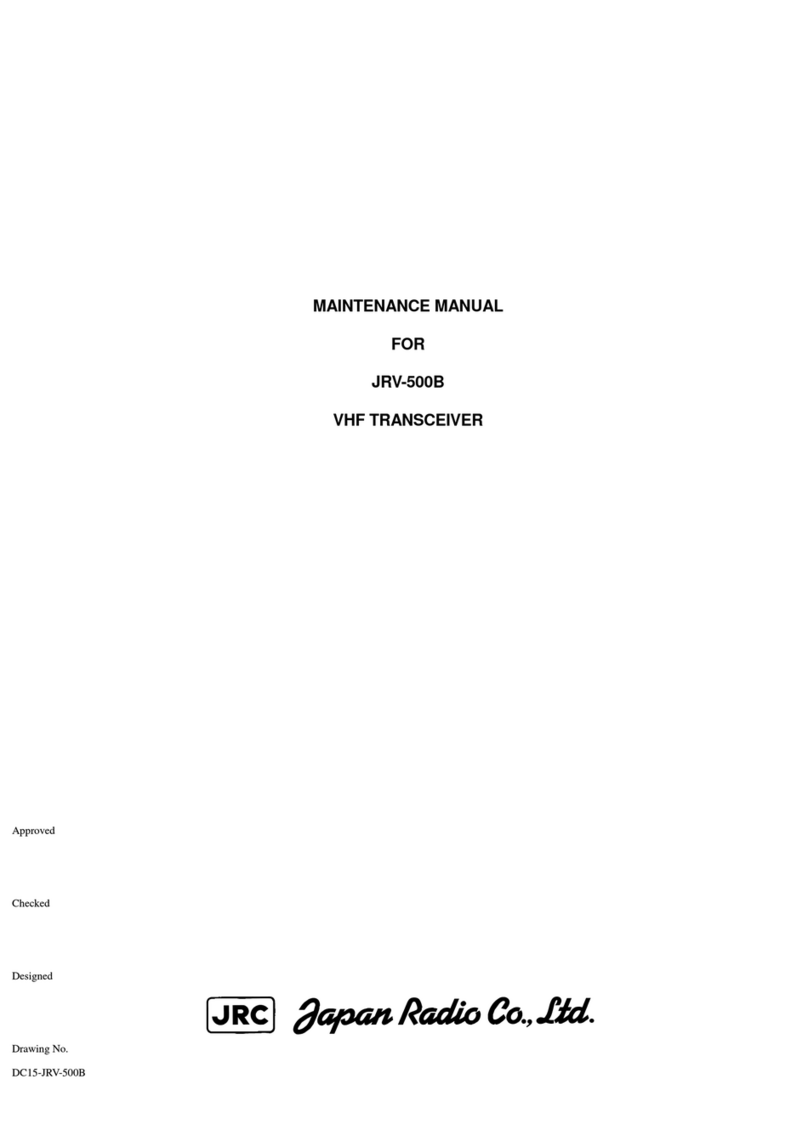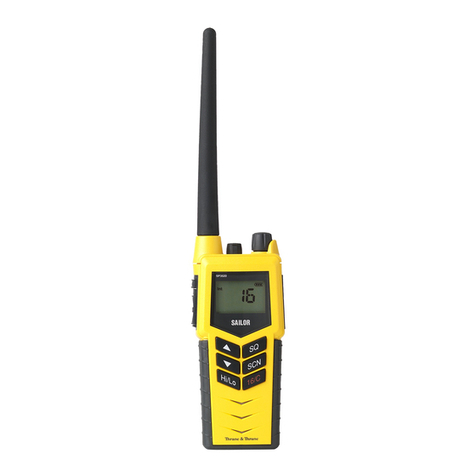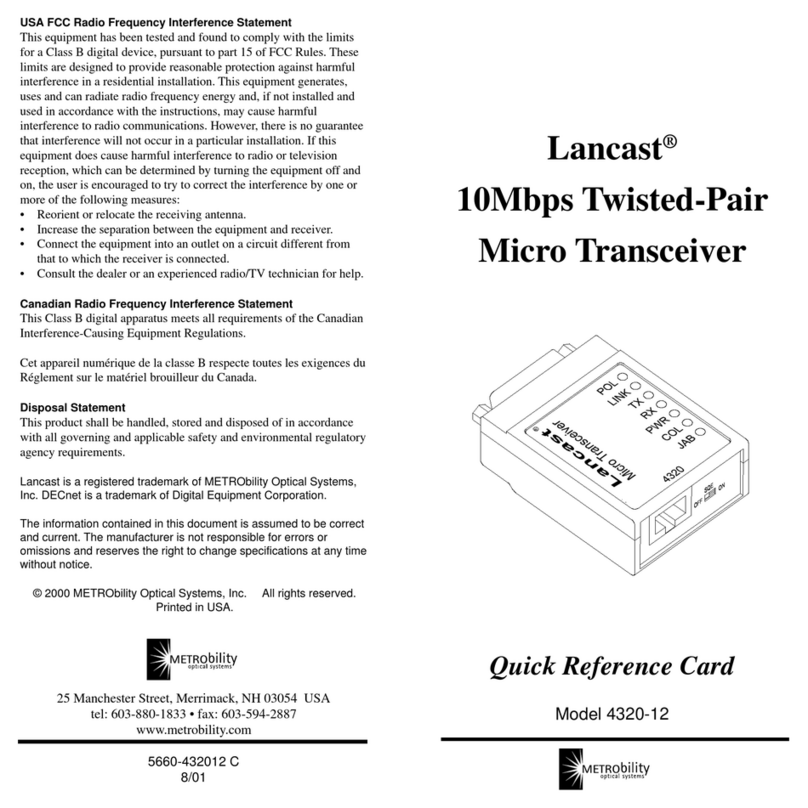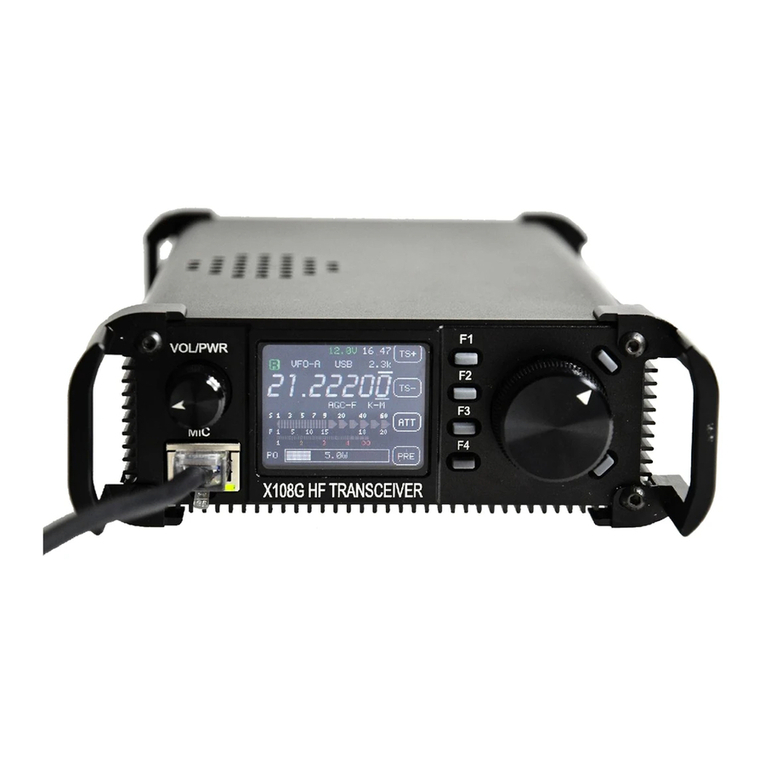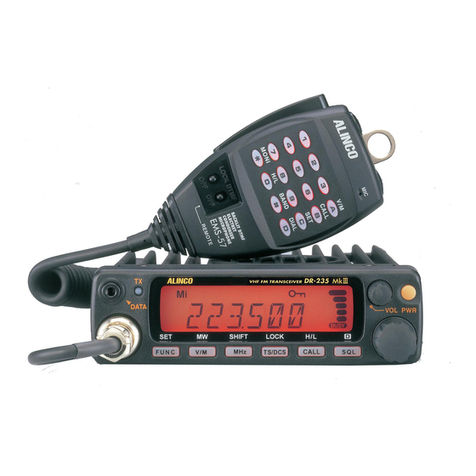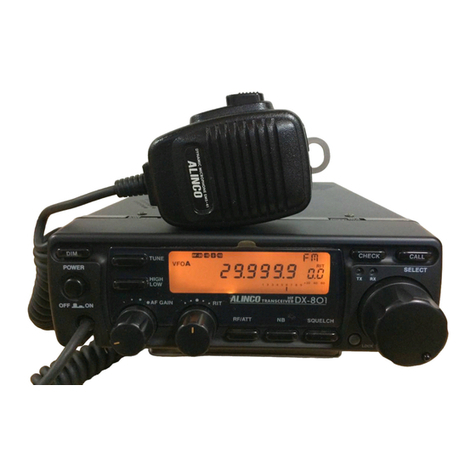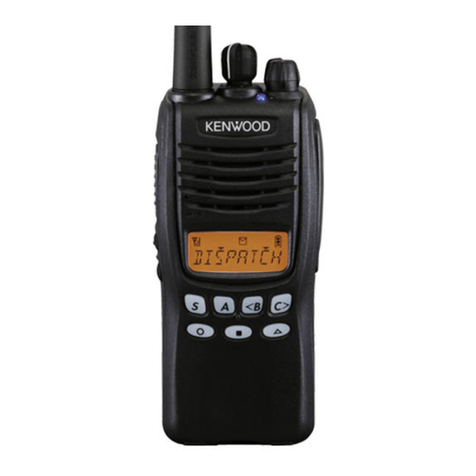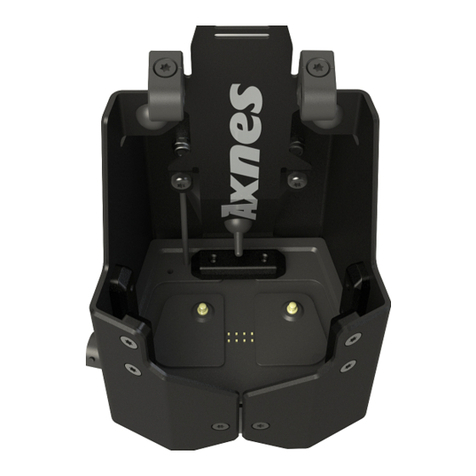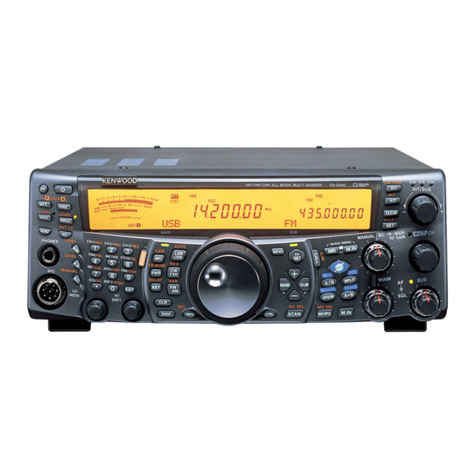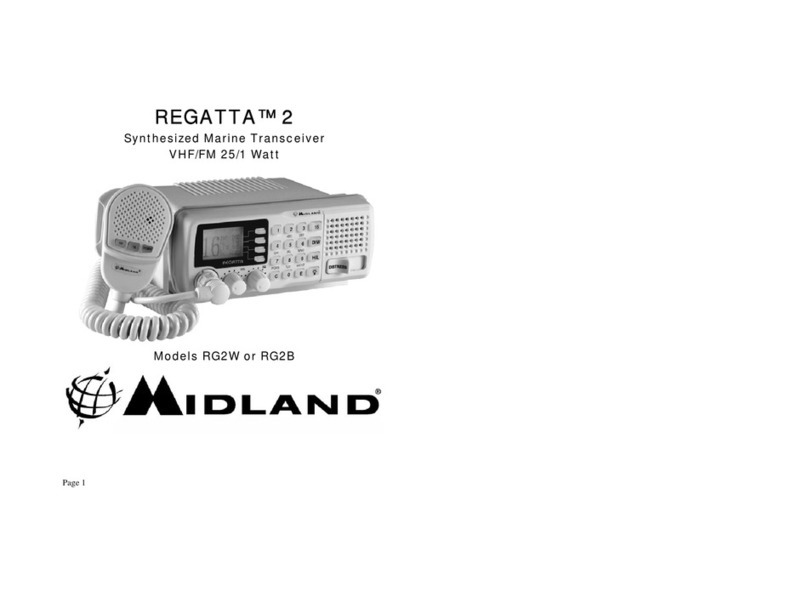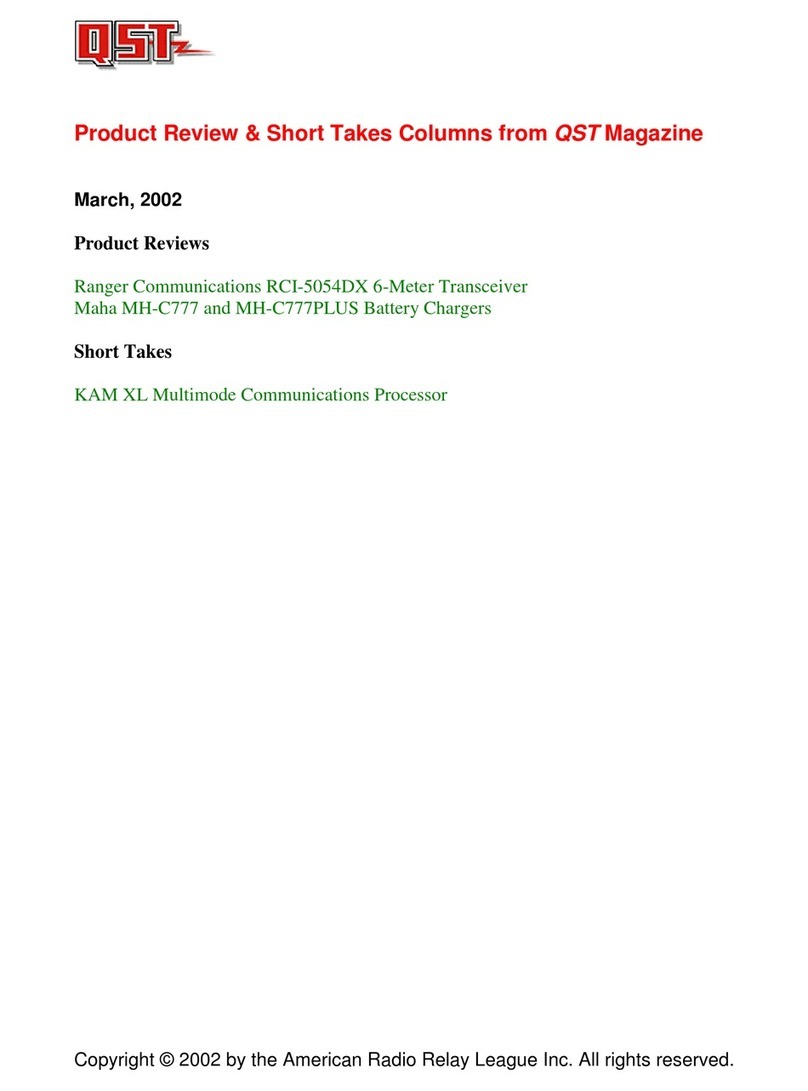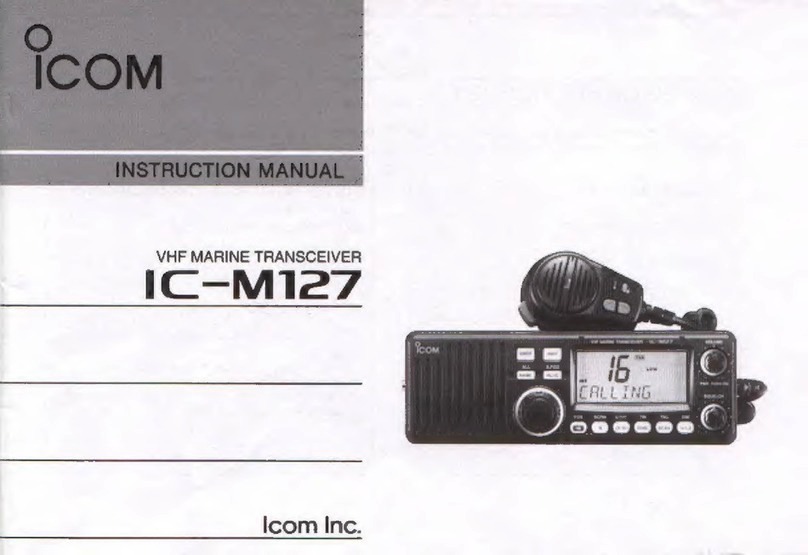CIRCUIT DESCRIPTTON
1) Receiver System
The receiver system is the double-conversion superheterodyne. ln L band the first
IF is 38.9MHz and second IF is 455kHz, and in R band the first IF is 45.1MHz and
second IF is 455kHz.
1 Front End
1-1 108.00MHz~ 173.995MHz (144M Band Main)
The receiving signal is passed through the low-pass filter (L90, L91 , L92, C220,
C229, C230, C231, C235), and amplified in RF amplifier (Q77), then led to the
resonant circuit (L85, L86, varicap D68, D69). The signal is amplified in RF
amplifier Q75, and passed through the resonant circuit (L81 , L82 varicap D66 and
D67), then converted into the frequency of 38.9MHz in the mixer Q79.
Two resonant circuits consisting of L85, L86, varicap D68, D69, L81 , L82, varicap
D66, D67, are controlled by the trucking voltage to obtain the best condition to the
receiving frequency.
The local signal from VVCO OUT is passed through the buffer Q79, and fed to the
base of the mixer Q76. The sum of the displayed frequency and IF frequency is
employed.
1-2 420.00MHz~51 1.995MHz: (430M Band Sub)
The receiving signal is passed through the band-pass filter (C59, C60, C61 , C66,
C67, C68, L57, L58, L53, L54), RF amplifier (Q62, Q72), band switch (D63), and
high-pass filter (C175, C176, C186, C187, L77, L78), and converted into the
frequency of 38.9MHz in mixer (Q74).
The local signal is passed through the buffer (Q70), and the difference frequency
between IF frequency and the displayed frequency is fed to the base of the mixer
(Q74).
1-3 130.00MHz~173.995MHz (144M Band Sub)
The receiving signal is passed through the low-pass filter (L90, L91 , L92, C220,
C229, C230, C231 and C235), and RF amplifier (Q68), low-pass fitter (C145,
C146, C153 and C154), then converted into the frequency of 45.1MHz in the mixer
(Q67).
The local signal is passed through the buffer (Q69), then the sum of displayed
frequency and IF frequency is fed to the base of the mixer (Q67).
1-4 420.00MHz~51 1.995MHz (433M Band Main)
The receiving signal is passed through the band-pass filter (C59, C60, C61 , C66,
C67, C68, L57, L58, L53, L54), RF amplifier (Q62, Q72) and the band-pass filter
(FL51), and amplified in RF amplifier (Q63), then converted into the frequency of
45.1MHz.
The band-pass filter (FL51) is the helical filter to obtain the band width characteris-
tics.
The local signal from UVCO OUT is passed through the diode switch (D58), buffer
(Q64), then the difference frequency between the displayed and IF is fed to the
base ofthe mixer (Q61).
2 IF
2-1 L Band The sum/difference between the receiving signal and local signal is made in each
mixer. The crystal filter (XF53) selects the difference of 38.9MHz and
eliminates unwanted signal, then it is amplified in the first IF amplifier (Q78).
2-2 R Band The sum/difference between the receiving signal and local signal is made in each
mixer. The crystal filter (XF51) selects the difference of 45.l MHz and
eliminates unwanted signal, then it is amplified in the first IF amplifier (Q60).3





















